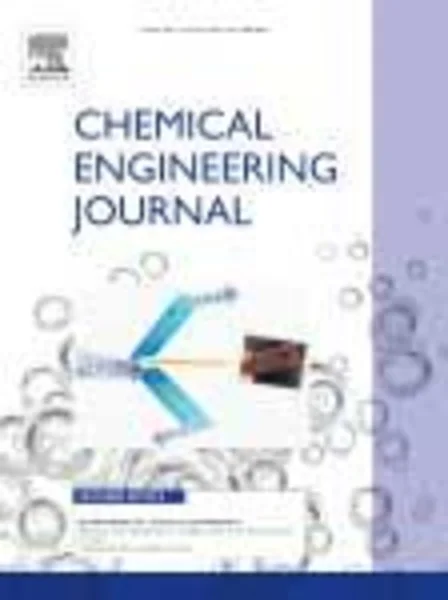-
removal of arsenic contaminants with magnetic γ-fe2o3 nanoparticles
جزئیات بیشتر مقاله- تاریخ ارائه: 1392/01/01
- تاریخ انتشار در تی پی بین: 1392/01/01
- تعداد بازدید: 704
- تعداد پرسش و پاسخ ها: 0
- شماره تماس دبیرخانه رویداد: -
magnetic γ-fe2o3 nanoparticles synthesized by a co-precipitation method at room temperature have been used to remove as(iii) and as(v) from their aqueous solutions. the adsorption of as(iii) or as(v) was found to be saturated within 30 min and has been interpreted in terms of a langmuir model at different temperatures. the adsorption capacities for as(iii) reached 59.25, 67.02, and 74.83 mg/g at 10, 30 and 50 °c, respectively. for as(v), the adsorption capacities at these temperatures were 88.44, 95.37, and 105.25 mg/g, respectively. the effects of ph and competing ions on the adsorption of arsenite and arsenate have also been examined. the adsorption capacity remained unchanged in the range of ph 3 to 11. the presence of cl−, so2-4, and no-3 had no effect on the adsorption capacity. however, the presence of po3-4, which has a similar outer electronic structure to that of the arsenic species, led to a significant reduction in the adsorption capacity. it is concluded from ftir and xps analyses that chemical binding with-- oh on the adsorbent surface is responsible for the adsorption of as(iii) and as(v). the saturated magnetic γ-fe2o3 nanoparticles could be recovered by applying a magnetic field of strength greater than 0.35 t. arsenic compounds were eluted from the magnetic adsorbent following treatment with 1 m naoh, leading to regeneration of the magnetic γ-fe2o3 nanoparticles. the nanoparticles retained over 40% of their initial adsorption capacity for arsenic compounds after 6 cycles.
مقالات جدیدترین رویدادها
-
استفاده از تحلیل اهمیت-عملکرد در ارائه الگوی مدیریت خلاقیت سازمانی و ارائه راهکار جهت بهبود
-
بررسی تاثیر ارزش وجوه نقد مازاد بر ساختار سرمایه شرکت های پذیرفته شده در بورس اوراق بهادار تهران
-
بررسی تأثیر سطح افشای ریسک بر قرارداد بدهی شرکت های پذیرفته شده در بورس اوراق بهادار تهران
-
بررسی تأثیر رتبه بندی اعتباری مبتنی بر مدل امتیاز بازار نوظهور بر نقد شوندگی سهام با تأکید بر خصوصی سازی شرکت ها
-
تأثیر آمیخته بازاریابی پوشاک ایرانی بر تصویر ذهنی مشتری پوشاک ایرانی (هاکوپیان)
-
بررسی ایجاد شهر هوشمند با تاکید بر حفاظت از محیط زیست و تنوع زیستی
-
مدلسازی عددی ارتعاش ناشی از شمع کوبی در مصالح خاکی با استفاده از فرمولبندی برهمکنش دینامیکی خاک و سازه
-
اثر جداسازی لرزه ای سازه نیروگاه های هسته ای بر کاهش شتاب تحت اثر زلزله های میدان نزدیک
-
مدل زونالیته ژئوشیمیائی برای اکتشاف ذخایر مس پورفیری در منطقه جبال بارز
-
اثر مدل سازی دستگاه پله های دوطرفه در سازه های بتن آرمه
مقالات جدیدترین ژورنال ها
-
مدیریت و بررسی افسردگی دانش آموزان دختر مقطع متوسطه دوم در دروان کرونا در شهرستان دزفول
-
مدیریت و بررسی خرد سیاسی در اندیشه ی فردوسی در ادب ایران
-
واکاوی و مدیریت توصیفی قلمدان(جاکلیدی)ضریح در موزه آستان قدس رضوی
-
بررسی تاثیر خلاقیت، دانش و انگیزه کارکنان بر پیشنهادات نوآورانه کارکنان ( مورد مطالعه: هتل های 3 و 4 ستاره استان کرمان)
-
بررسی تاثیر کیفیت سیستم های اطلاعاتی بر تصمیم گیری موفق در شرکتهای تولیدی استان اصفهان (مورد مطالعه: مدیران شرکتهای تولیدی استان اصفهان)
-
اقسام شرط در نکاح، با تأکید بر شرط عدم بارداری
-
بررسی ماهیت حقوقی ماده 679 قانون مدنی و مقایسه آن با ماده 959 قانون مدنی
-
تاثیر توزیع نرمال و روش کمترین حداقل مربعات در تئوری خطاها
-
ارتباط کیفیت سود و حق الزحمه حسابرسی با سیاست تقسیم سود شرکتهای پذیرفته شده در بورس اوراق بهادار تهران
-
developing genetic algorithm to solve vehicle routing problem with simultaneous pickup and delivery




سوال خود را در مورد این مقاله مطرح نمایید :